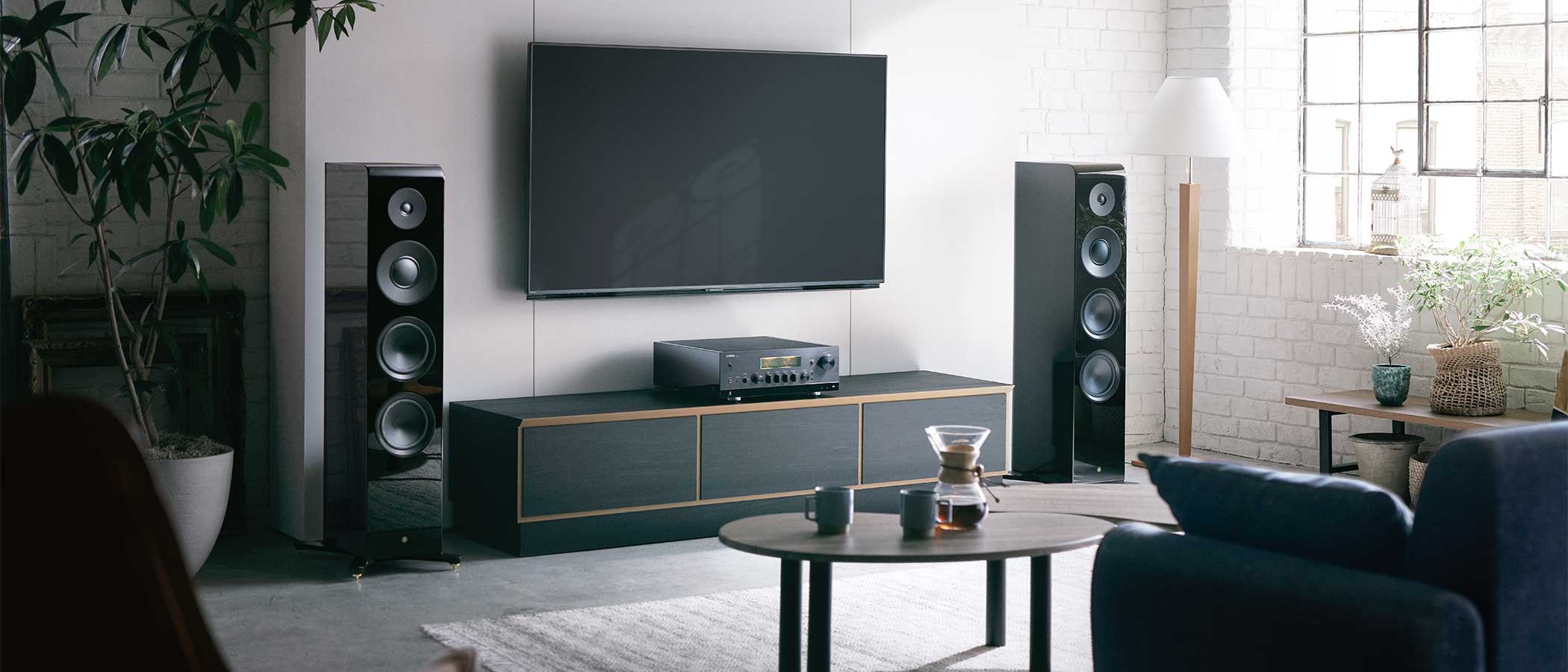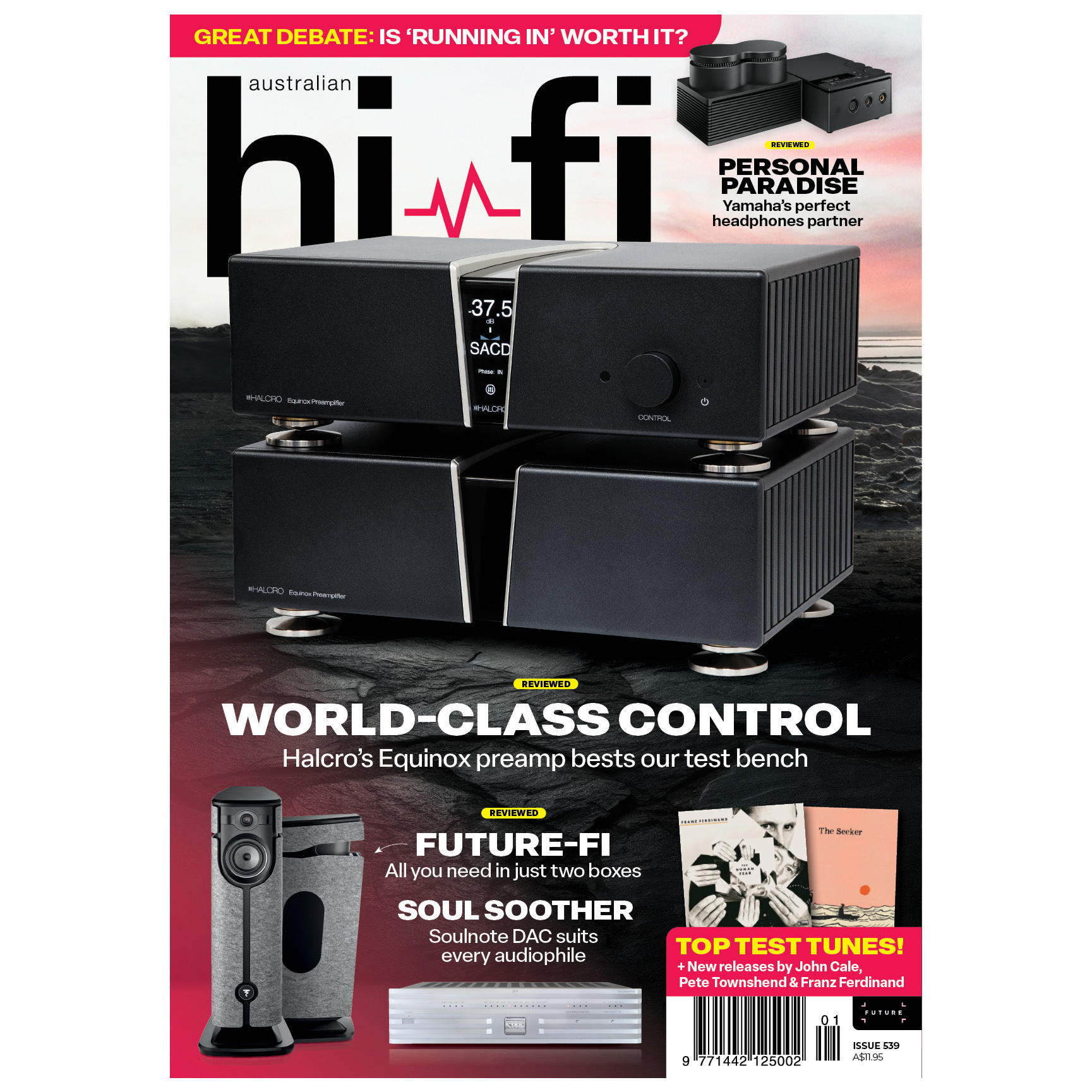What Hi-Fi? Verdict
Glossy, slim, sounding as lovely as they look, these floorstanders remind the world that Yamaha knows more than a thing or two about the art of loudspeaker design and manufacture.
Pros
- +
Fabulous sound with impressive
- +
bass extension
- +
Gorgeous finish
- +
True three-way design
Cons
- -
No bi-wire facility
Why you can trust What Hi-Fi?
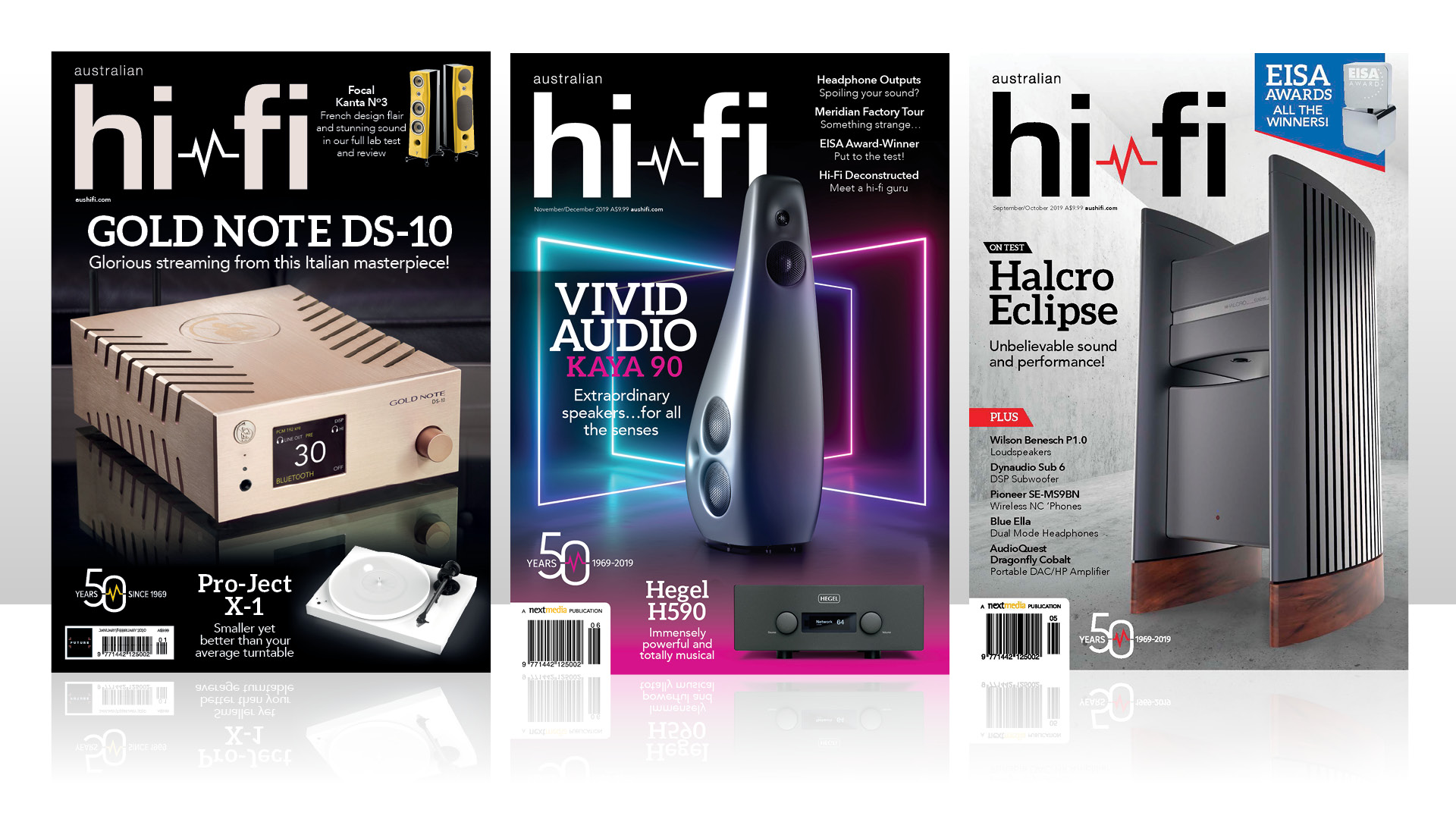
This review and test originally appeared in Australian Hi-Fi magazine, one of What Hi-Fi?’s sister titles from Down Under. Click here for more information about Australian Hi-Fi, including links to buy individual digital editions and details on how best to subscribe.
Mention Yamaha to many people and they may think of motorcycles or pianos or even outboard motors. Those who know Yamaha’s hi-fi and AV credentials may talk of their amplifiers, AV receivers or CD players.
But Yamaha is perhaps lesser known for its loudspeakers – and yet the Japanese company has been building speakers for even longer than it has many of those other components.
You see, Yamaha’s first electronic organ, the Electone D-1, was released in 1959, and it featured Yamaha’s very own ‘Natural Sound’ loudspeakers. These drivers were subsequently developed into high-end hi-fi speakers bearing the NS-20 and NS-30 model names, released eight years after the electric organ and often claimed to be Yamaha’s first ‘Natural Sound’ speakers. Both were three-way designs, with the NS-30 using a bass driver measuring 890 × 630mm (!) and the NS-20 using one measuring 680 × 500mm (also !), these very large and odd-shaped diaphragms being made, rather uniquely, from Styrofoam.
The model numbers took their initial letters from the ‘Natural Sound’ slogan and, as you can see from the model reviewed here, the company’s speakers still do. In fact, Yamaha has used these two letters to name all of its hi-fi loudspeakers since 1967 (except for one, which we’ll shortly revisit momentarily).

Material innovation

Type: Three-way bass-reflex
Drivers: 30mm tweeter dome, 80mm midrange dome; 2 x 16cm (6.5-inch) bass cone
Quoted frequency response: 34Hz–65kHz (–10dB)
Sensitivity: 88dBSPL
Crossover frequencies: 750Hz/3.5kHz
Nominal impedance: 6 ohms (min 3.5 ohms)
Dimensions (HWD): 113 x 33 x 45cm
Weight: 32.8kg
Warranty: Five years
In the 50-odd years Yamaha has built hi-fi loudspeakers, it has scored more than its fair share of world-first innovations, including some which have since been adopted by other brands of loudspeaker manufacturers.
One of the first and most significant was the company’s use of beryllium to manufacture drivers in the Yamaha NS-1000 and NS-1000M models, released in 1974. Beryllium had been proposed as an ideal cone/dome material for many years – its light weight, high rigidity and hardness meant that its sound propagation velocity was more than twice that of the titanium/magnesium/aluminium alloys being used in some speaker cones and domes in the 1960s.
But beryllium is poisonous, very brittle and susceptible to corrosion – factors that made it impractical to use, until Yamaha modified an electron-beam vacuum deposition method that was being used to manufacture integrated circuits to instead create loudspeaker diaphragms that were 99.99% pure beryllium. Consequently, its NS-1000 and NS-1000M speakers could benefit from having midrange drivers and tweeters with beryllium domes.
The latest hi-fi, home cinema and tech news, reviews, buying advice and deals, direct to your inbox.
Yamaha was also one of the first to develop a bass driver cone made exclusively from carbon fibre (previous ‘carbon-fibre’ cones developed by other manufacturers used carbon fibre in combination with various other materials). The company’s first pure carbon-fibre bass driver was a 330mm unit codenamed JA3301, used in the very first NS-2000, released in 1982. The unique method Yamaha developed to manufacture this cone involved cutting a single carbon sheet that had its fibres aligned in one direction into eight equal parts that were then rejoined in such a way as to form a cone where the fibres were radially aligned.
The spiralling costs of carbon fibre and beryllium forced Yamaha (along with other manufacturers) to look for alternative materials, in 2009 settling on polymer-injected Mica diaphragms (A-PMD, with the ‘A’ standing for Advanced) for midrange and bass drivers, with aluminium-dome tweeters using a unique design Yamaha called ‘DC Diaphragm’.
This design physically integrated the tweeter’s dome with its voice coil – another first. These new technologies were first seen on the Yamaha Soavo-1 and then again on the Soavo NS-F901. (As you might have just guessed, the Soavo-1 were the Yamaha speakers without the letters ‘NS’ in their model name, although as their full name was actually ‘Soavo-1 Natural Sound Speaker System’, they didn’t break entirely with tradition!)
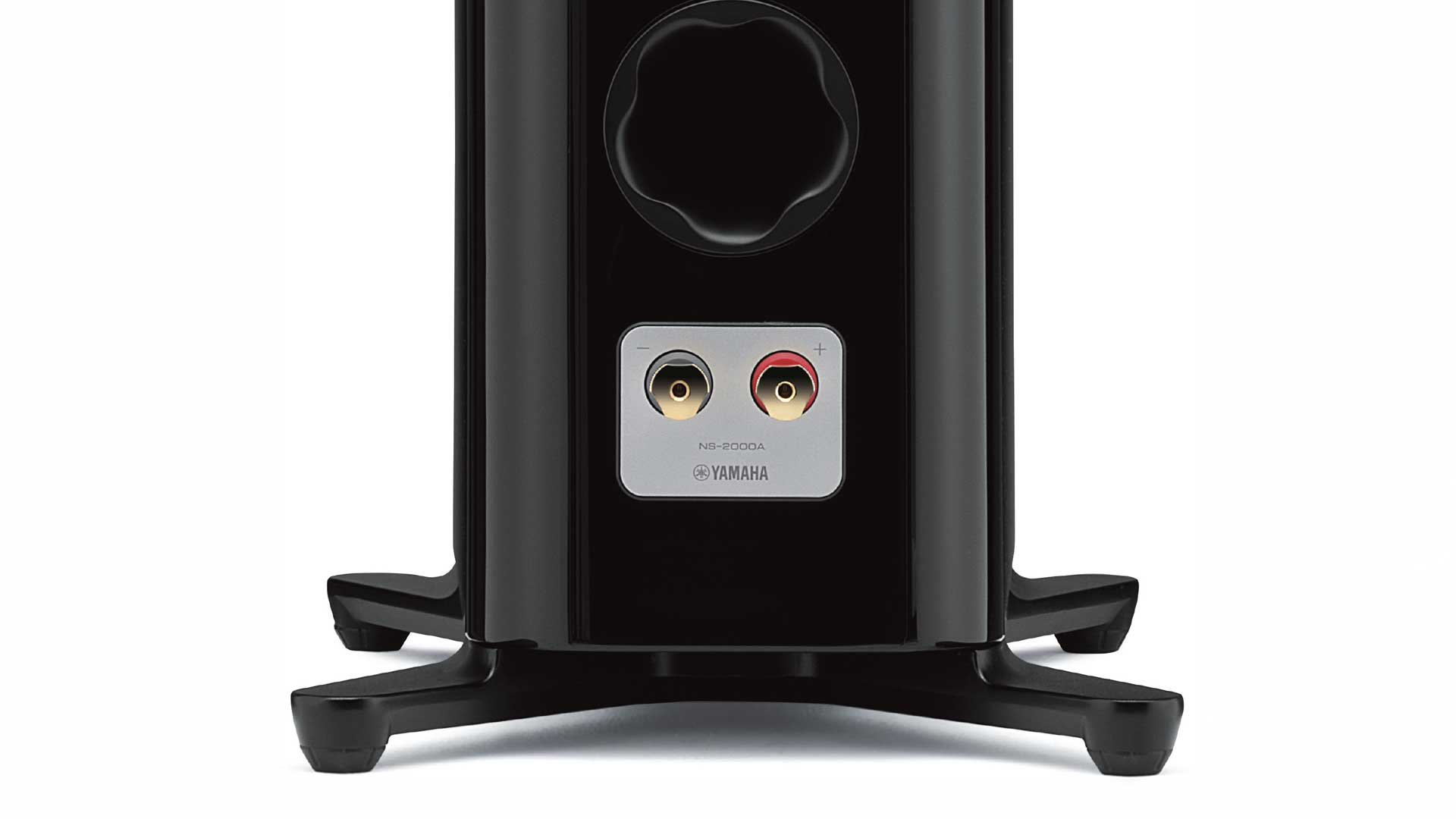
Design & build
There’s a school of thought which says that for the most cohesive tonal quality across the entire audio band, it’s best to use drivers with diaphragms made from the same material. With its new NS-2000A design, Yamaha seems to have taken its design playbook from this very school, as the diaphragms of all four of each speaker’s drivers are made from exactly the same material: a blend of wood fibre and Zylon that the company calls a ‘Harmonious Diaphragm’.
The wood used is from the same spruce used to make the soundboards for Yamaha’s grand pianos. The company says that using the same spruce/Zylon material for the diaphragms across the NS-2000A’s drivers “ensures accurate, faithful tonal expression throughout the entire audio spectrum, making the harmonies of the sound stand out and the music richer and more beautiful.”
Zylon is an extremely strong synthetic polymer (its chemical name is ‘p-phenylene-2,6-benzobisoxazole’... so you can see why everyone calls it ‘Zylon’) that is claimed to have an acoustic velocity comparable to that of beryllium and a tensile strength that is 1.6 times higher than Kevlar. (We gather that the parachutes used by SpaceX spacecraft have shrouds made from the material.) Yamaha previously used Zylon in its NS-5000 loudspeakers, though there it vapour-coated the Zylon with a Monel alloy.
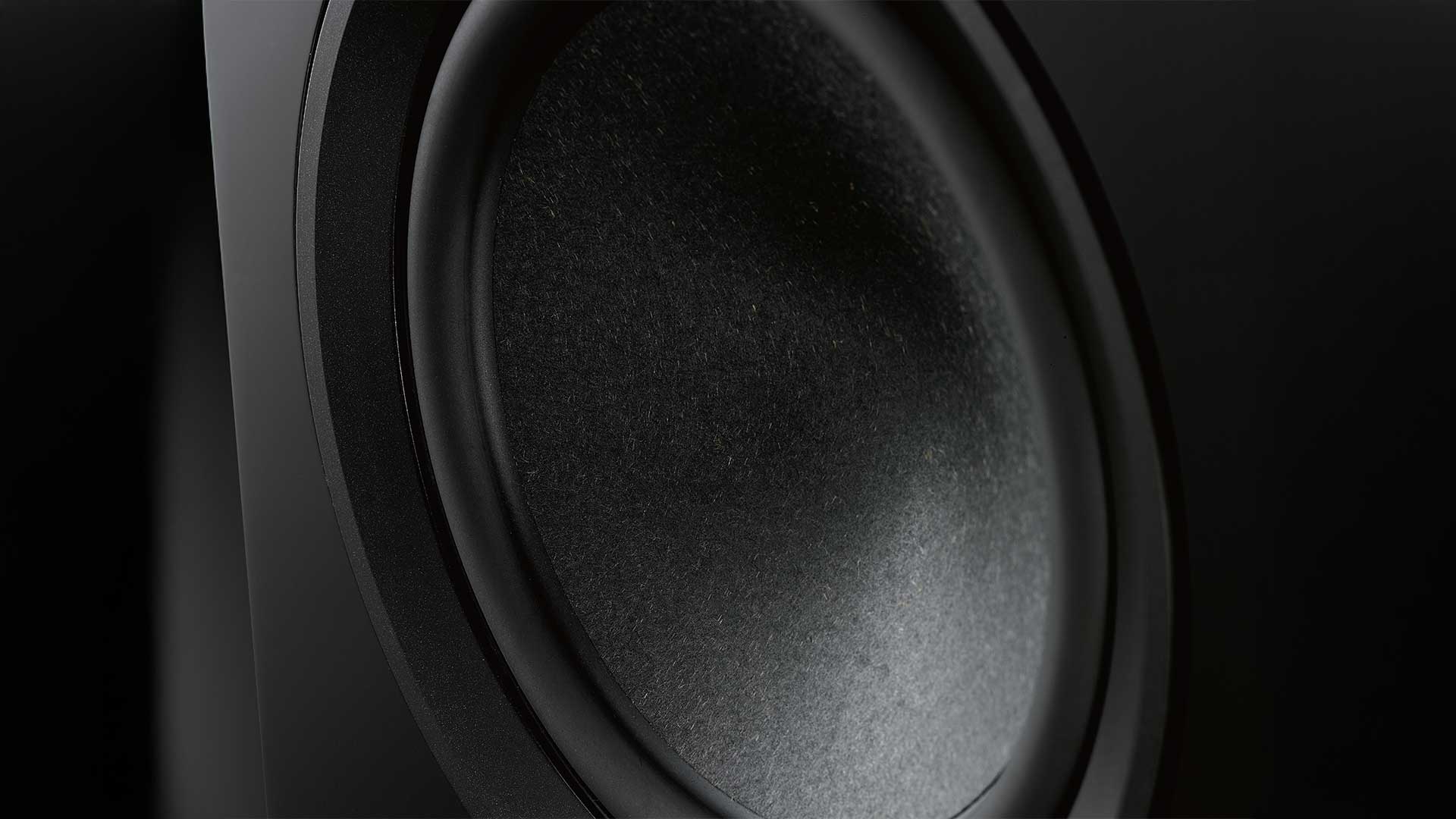
The two bass drivers in the NS-2000A are identical and have diaphragms that are almost – but not quite – cone-shaped. Yamaha specifies their diameter at 160mm. If Yamaha had used just a single driver to deliver bass, rather than sharing the load over two drivers, it would have required an overall diameter of around 210mm.
Yamaha is using a natural rubber for the driver suspension (roll surround), which is impervious to the ‘rot’ that affects foam roll surrounds and is also more temperature-stable. The mounting hardware for each driver is concealed behind a black plastic dress ring.
The midrange driver is a spruce/Zylon dome measuring 75mm in diameter and suspended by a surround that appeared to us to be made of doped fabric. Using a dome as opposed to a cone for a midrange driver comes with both advantages and disadvantages. The dispersion pattern more closely resembles that of a dome tweeter, and the frequency response can extend higher than that of a cone, allowing it to take some of the workload from the tweeter; the crossover frequency between midrange and tweeter can be higher, too, moving it to a region where the ear is less sensitive.
One disadvantage, however, is that the low-frequency response of a dome midrange is more limited than a cone design, meaning the crossover between bass and midrange needs to be a little higher than usual.
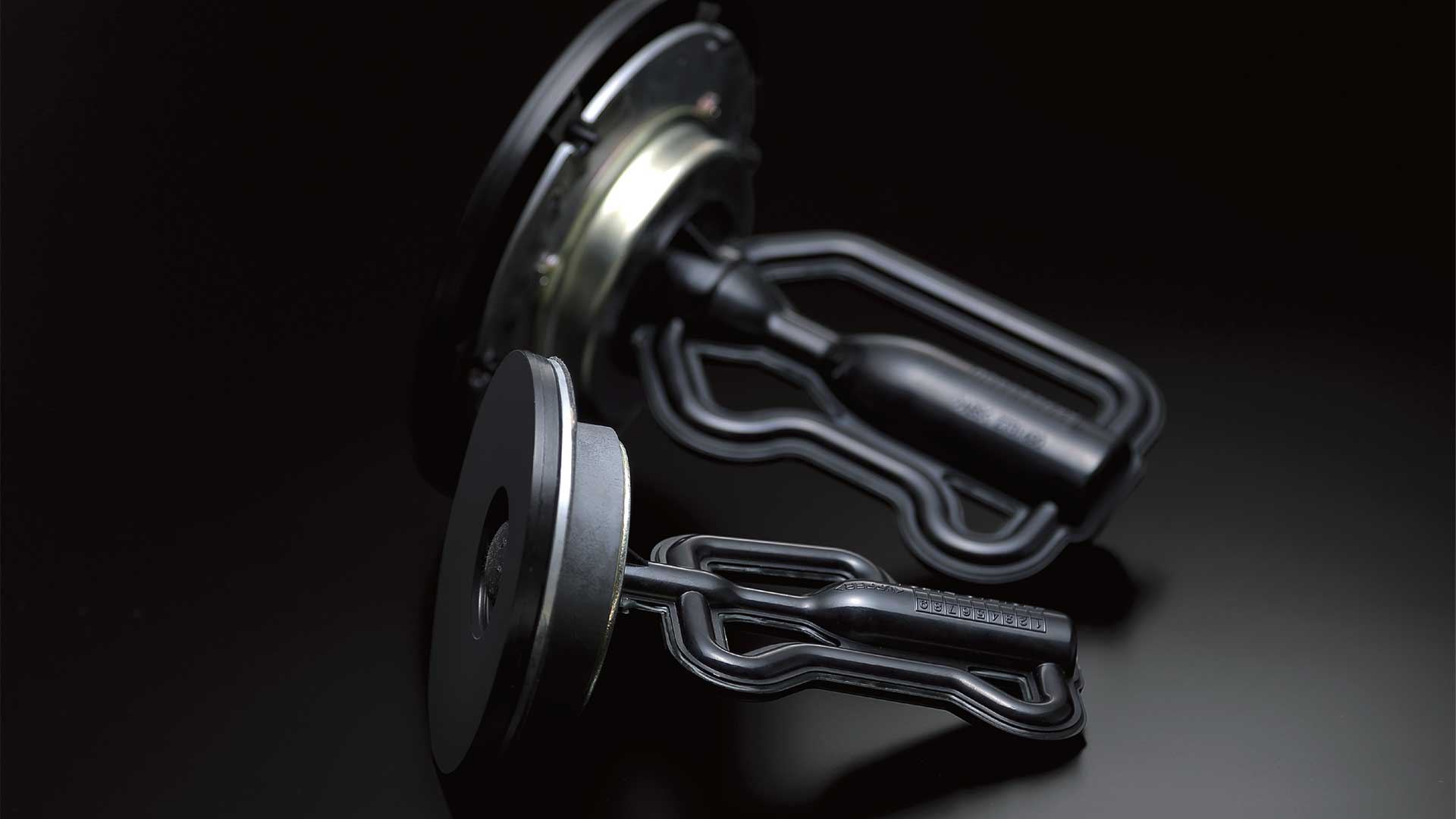
The NS-2000A’s midrange driver has a ‘resonance suppression’ (R.S.) chamber behind the dome that absorbs sound that might otherwise reflect back through the dome and interfere with the primary wavefront. Yamaha developed these so-called ‘R.S. Chambers’ (pictured above) when it designed the NS-5000, stating that they “eliminate the need for a large quantity of sound-absorbing material inside the enclosure that tends to smooth the frequency response of each speaker unit and might degrade minute nuances.”
Back when the NS-5000s were designed, Yamaha had only patents ‘pending’ for these resonance suppression chambers; it appears those patents have now been granted. According to Yamaha, those inside the NS-2000A speakers “are mounted on the back of the tweeter and midrange units… two specially-shaped tubes that cancel unwanted tube resonance generated behind the diaphragm, without relying on conventional sound-absorbing materials.”
The dome midrange driver is surrounded by a very large, slightly concave black plastic dress ring that we assume serves not only to hide the mounting hardware but also as a horn to improve the efficiency of the dome as well as a lens to control its dispersion.
Yamaha says the NS-2000A’s tweeter has a 30mm dome; it looks perhaps closer to 35mm. The tweeter’s material also seemed ‘softer’ than the midrange; Yamaha may be using the same two materials here but in a different ratio. But like the midrange, it too has its own resonance suppression chamber and a (smaller) plastic dress ring/lens.
The crossover frequencies between the drivers are specified at 750Hz and 3.5kHz, with Yamaha saying its adopts the highest quality crossover parts, including MCap Supreme Classic capacitors from Mundorf of Germany, along with a huge woofer coil.
The NS-2000A towers are, like almost all Yamaha’s loudspeakers (post the NS-1000/M), bass-reflex designs. The bass-reflex port is located at the rear of the cabinet, close to the base and immediately above the two multi-way speaker terminals, which are made from pure brass. While it might have been nice to have two sets of speaker terminals, to allow bi-wiring and/or bi-amping, we can live with the provision of just a single set.
As for the port, it appears to use the same ‘twisted flare’ design found on the flagship NS-5000 to prevent port noise.
As you would wholly expect from a company that is renowned around the world for the quality of its pianos, Yamaha has paid the same attention to the quality of the finish on NS-2000A’s cabinet; the gloss-black painted finish is identical! The outrigger feet at the cabinet base which improve stability are also better-looking than most and come with two different sets of feet for carpet or solid floors.

Listening sessions
Bass is important. It’s the reason some people much prefer floorstanders over standmounts: more bass, deeper bass, better bass! The weirdly satisfying sounds on the first track (The Hidden Camera) of Photek’s album ‘Modus Operandi’ is a good track for testing bass, due to being spare and sparse. The double-bass and drums are cleanly recorded, while the electronic sounds that alternate between foreground and background (this is Rupert Parkes, after all!) make the sense of acoustic space all-pervasive. We found the bass reproduction to be both deep and clean, so it was a win-win for the NS-2000A on that front.
We spent time listening to James Blake’s self-titled debut album, much of it playing Limit to Your Love over and over, where the fragile vocals and simple piano chords soon give way to deep sofa-shaking bass that rattles around at the bottom of the register.
“Whether your kit can deliver the goods will quickly become apparent,” says What Hi-Fi?’s Joe Cox of this track (one of his favourites to test with). It became quickly apparent that the Yamahas could indeed deliver the goods easily and in spades.
If loudspeakers can’t accurately replicate the sound of an acoustic piano, they shouldn’t be on your auditioning list. We often audition using Erik Satie, but sometimes also his heir apparent, Canadian composer, pianist and singer/songwriter Jason Charles Beck, better known as Chilly Gonzales (or if you’re a real fan, Gonzo). He seems to have studied showmanship under Salvador Dali. Listening to the warm, well-recorded piano sound on his sensibly (if unoriginally) named album ‘Solo Piano’ had us smiling constantly, not only because the NS-2000As were delivering the piano sound so well but also because the music is so funny and spiritually uplifting. Listen to how sonically neutral the sound is across the 88-note span, and to how accurately
the NS-2000A speakers reproduce the very highest three of those keys.
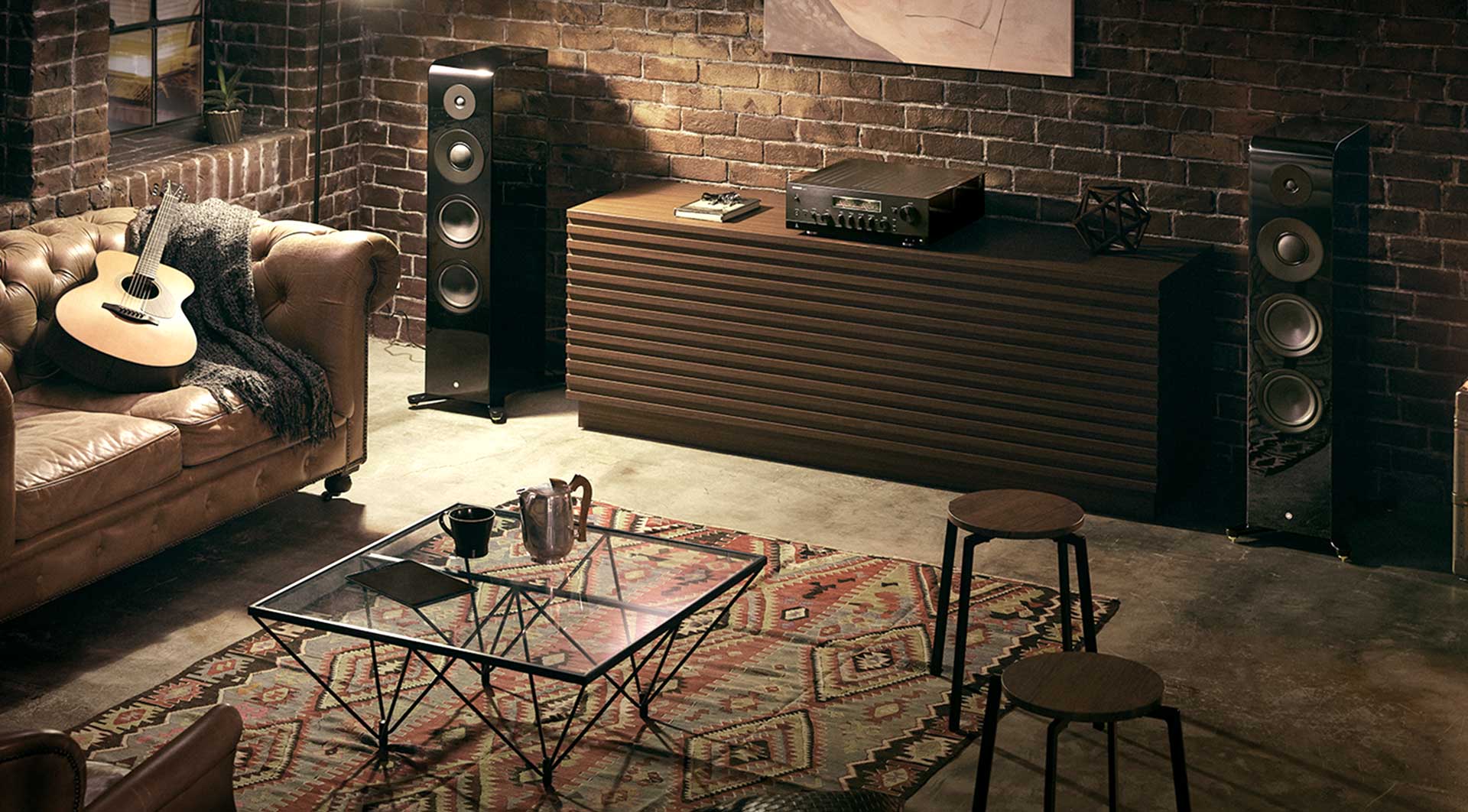
Female vocals are also a good test for a loudspeaker’s accuracy, but many Australian audio reviewers overlook homegrown talent in favour of the usual foreign suspects. We turned to our very own Sia Kate Isobelle Furler, an Adelaide native who has a voice (and vocal range) most singers would kill for, not to mention a talent for songwriting that has seen her work with Beyoncé, Kylie Minogue and Rihanna. We listened to ‘1000 Forms Of Fear’, with its piano versions of her hits Chandelier and Elastic Heart; the NS-2000As made her sound so good that Yamaha’s engineers might even have engineered a little ‘magic’ of their own into the frequency response to improve the sound of vocals.
Sarah McLachlan is another regular during reviewing sessions, especially her best album ‘Surfacing’ – even the slow, dirge-y tracks! – where the sound quality is exemplary: McLachlan’s voice, her piano and acoustic guitar playing, Yves Desrosiers’ lap steel or Jim Creeggan’s double-bass. We could hear all of these elements very clearly and with beautiful tonal accuracy through these Yamahas. The deep bass effects on I Love You were particularly spectacular, as were the ping-pong left/right channel effects on Witness. Pierre Marchand perhaps overdid the reverb on McLachan’s voice for Angel, but there are side benefits to the excess, in that you can hear the way the NS-2000As deliver extreme highs and echo-ey atmospherics.
And just listen to the ability of the speakers to create a full, wide, depthy soundstage for Black & White while still maintaining a tight focus on the central image. This shows also that Yamaha’s team keeps a very tight rein on quality control by ensuring that all of the drivers are perfectly matched before they’re installed in their cabinets.
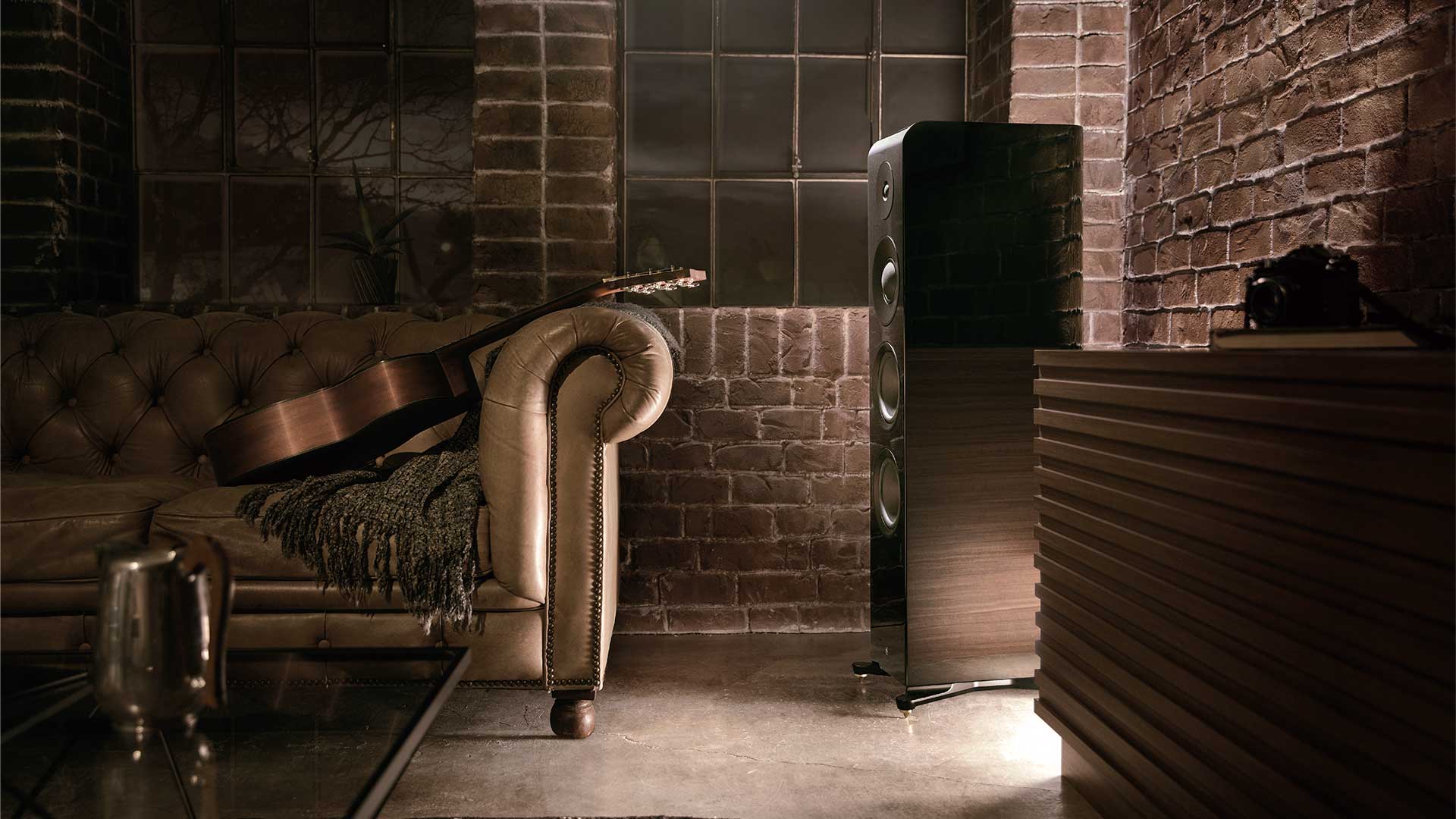
Verdict
Yamaha’s NS-2000A floorstanders tick many boxes when it comes to performance. Bass extension: tick. High-frequency extension: tick. Midrange smoothness: tick. Their electrical efficiency is such that they will work well with even low-powered valve amplifiers, yet they also have the power-handling capacity to deliver the kind of volume levels you may need in a large room.
And we’re going to guess that your other half will tick the box marked ‘domestic acceptability’, because they’re not only a room-friendly size but also look absolutely gorgeous.
Laboratory test report
Readers interested in a full technical appraisal of the performance of the Yamaha NS-2000A Loudspeakers should continue on and read the laboratory report. Readers should note that the results mentioned in the report, tabulated in performance charts and/or displayed using graphs and/or photographs should be construed as applying only to the specific sample tested.

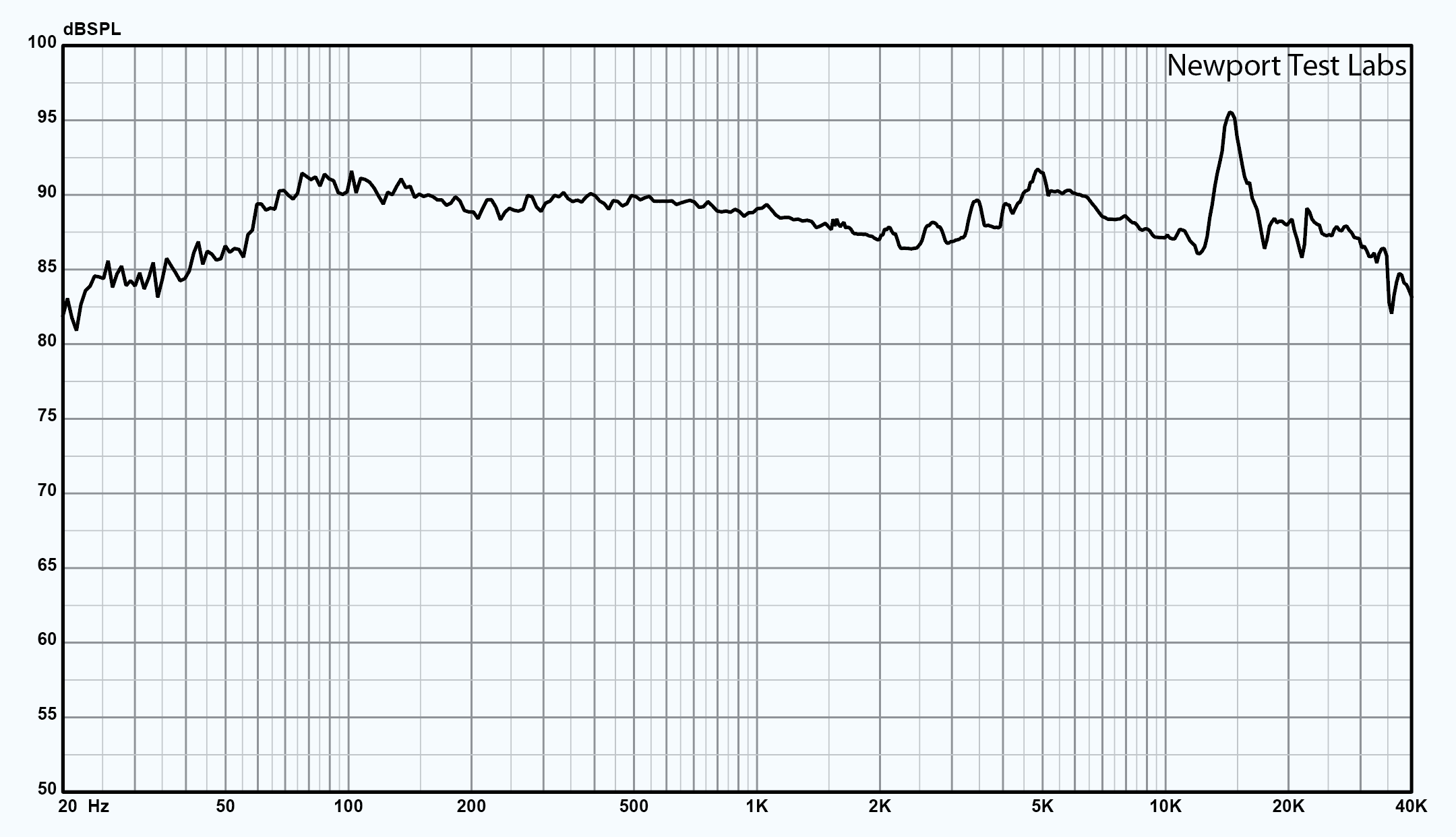
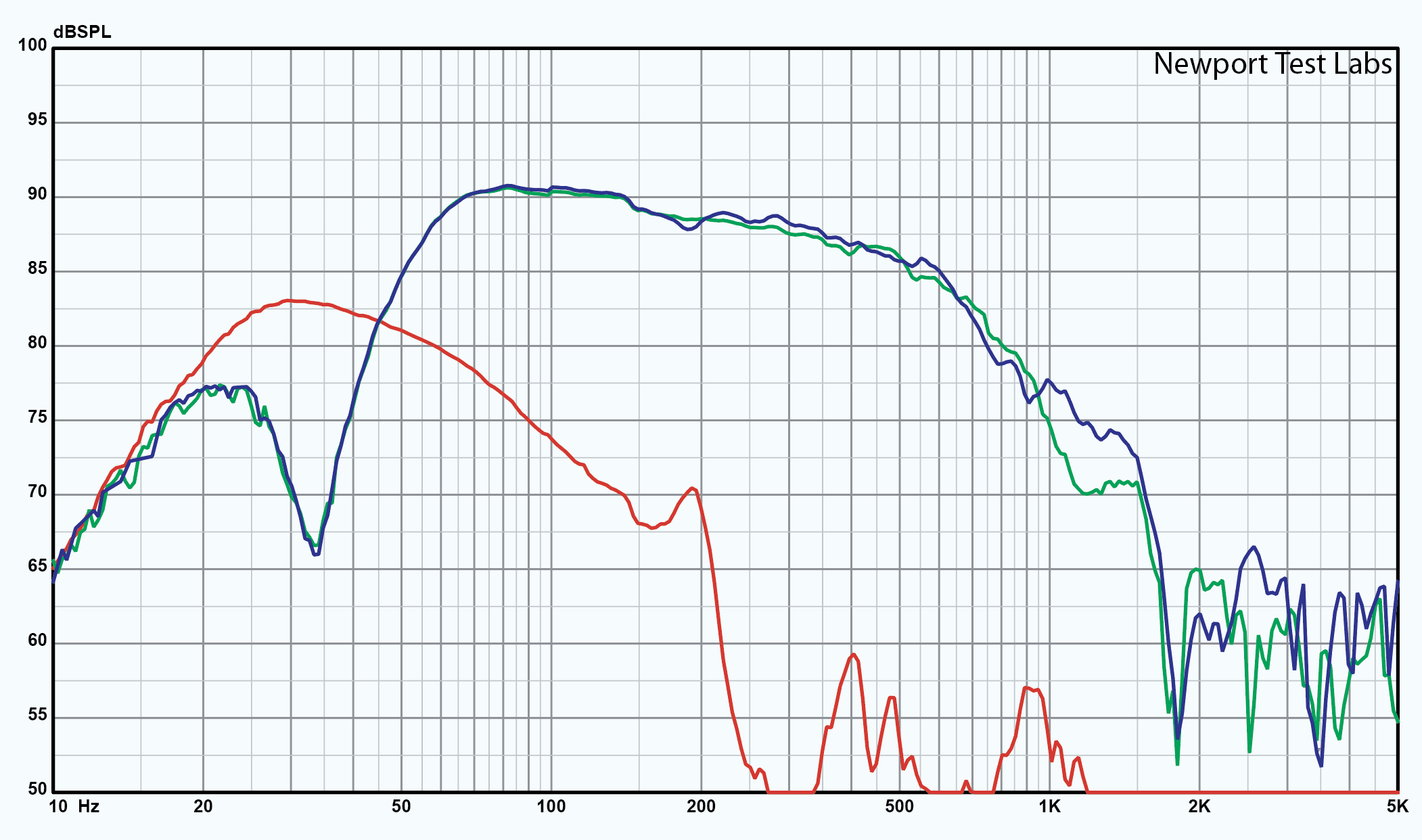
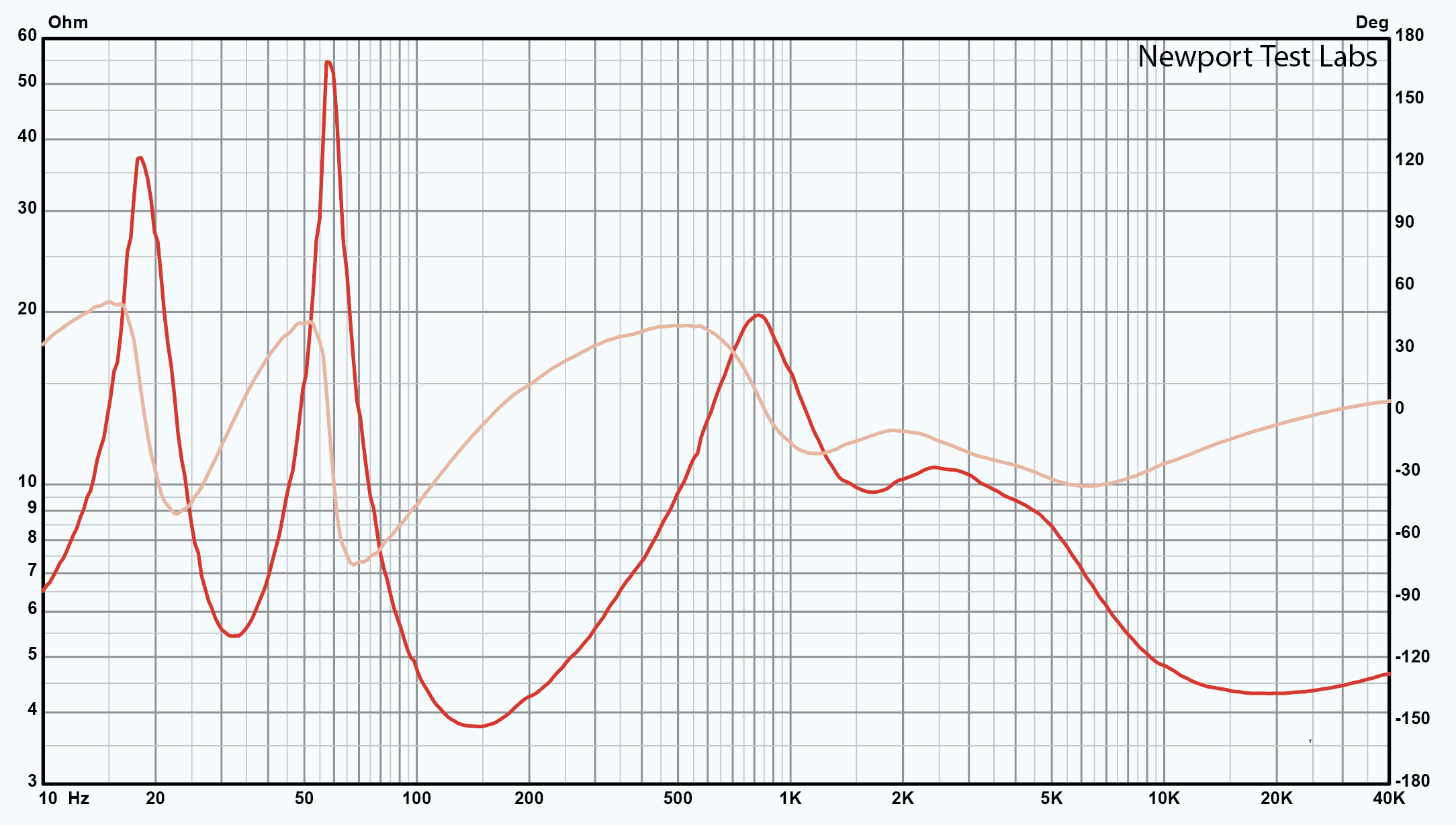
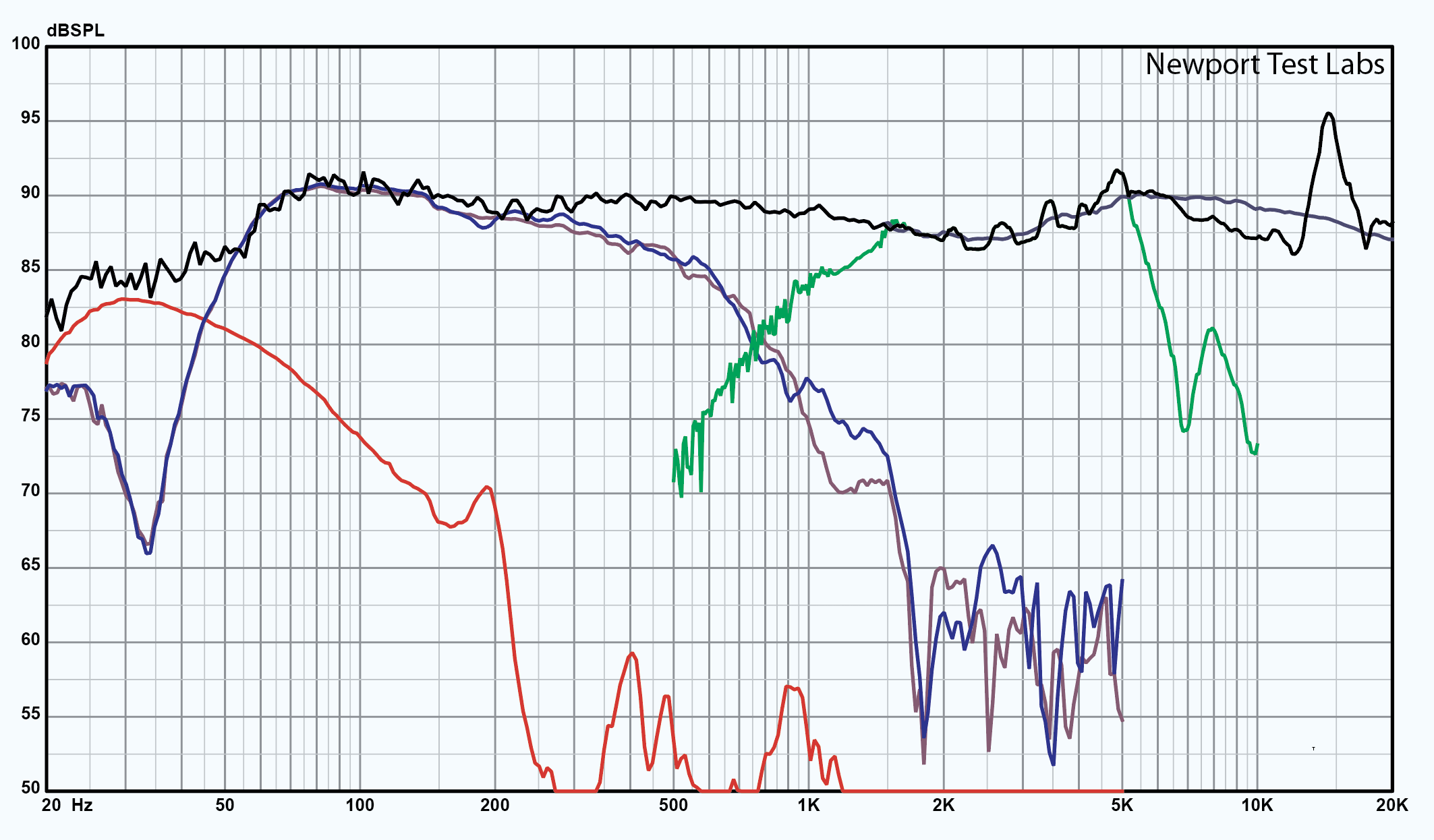
The in-room frequency response measured by Newport Test Labs for the Yamaha NS-2000A design is shown in Graph 1 and you can see that it’s superbly linear and extended, such that the overall response is 24Hz to 20kHz ±3dB. If we ignore the very lowest frequencies, the response between 60Hz and 20kHz is essentially ±1.5dB – amazingly flat. This response was obtained by averaging nine measurements taken in a grid form, with the centre of the grid on-axis with the tweeter at a three-metre distance.
Graph 2 shows a frequency response where the trace below 1.5kHz is the room response from Graph 1, while the trace above is the anechoic response of the tweeter, measured on-axis with the tweeter at a distance of only one metre. The anechoic measurement enables higher measurement precision and shows a resonance in the tweeter’s output at around 14.8kHz. While this resonance is of academic interest, it’s at such a high frequency (beyond the hearing range of adult listeners) and affects such a narrow band that it would not be audible when listening to music.
The NS-2000A’s low-frequency response is shown in Graph 3, measured using a near-field technique that is really only accurate at frequencies below around 300Hz, so you can effectively disregard the level of the traces above this frequency. That said, the smoothness of those traces is informative in that it reveals how beautifully matched the two bass drivers are — the disparity between 1kHz and 1.5kHz is simply due to them being in different positions on the baffle.
There is a very slight perturbation in the response of one of the bass drivers at around 190Hz, which is echoed in the trace showing the output of the rear-firing bass-reflex port. You can see that the bass drivers’ response rolls off very smoothly from around 70Hz to the 34Hz null. You can also see the port’s output compensating for that null very effectively, with it having been obviously hand-tuned to peak in frequency a little lower than the null in order to improve bass extension beyond what you would expect from a strictly ‘by the book’ alignment.
The impedance of the NS-2000A, as measured by Newport Test Labs and shown in Graph 4, shows why Yamaha has elected to specify a nominal impedance of six ohms for the design, because the impedance drops below that figure between 85Hz and 300Hz, and also from above 7kHz right out to beyond 40kHz. Despite this, it nonetheless presents an easy load for any competent amplifier design, even considering that impedance minimum of 3.7 ohms at 140Hz. The frequency of the minima between the two low-frequency resonance peaks is at a very low 32Hz, reinforcing the considerable bass extension delivered by this design (as evidenced by the frequency response graphs).
Graph 5 is a composite that ‘marries’ the various frequency response measurements made by Newport Test Labs while adding a measurement of the midrange driver to show where its contribution fits into the overall schema.
Newport Test Labs measured the sensitivity of the NS-2000A as being 87dBSPL at one metre for a 2.83Veq input. This is a mere 1dB lower than Yamaha’s specification of 88dBSPL and therefore very likely due to differences in measurement techniques. The result means these Yamaha loudspeakers’ efficiency is spot-on the average for floorstanding designs.
Overall, the NS-2000A loudspeakers exhibited excellent performance across all of the tests and measurements conducted on them by Newport Test Labs.
Australian Hi-Fi is one of What Hi-Fi?’s sister titles from Down Under and Australia’s longest-running and most successful hi-fi magazines, having been in continuous publication since 1969. Now edited by What Hi-Fi?'s Becky Roberts, every issue is packed with authoritative reviews of hi-fi equipment ranging from portables to state-of-the-art audiophile systems (and everything in between), information on new product launches, and ‘how-to’ articles to help you get the best quality sound for your home.
Click here for more information about Australian Hi-Fi, including links to buy individual digital editions and details on how best to subscribe.
You must confirm your public display name before commenting
Please logout and then login again, you will then be prompted to enter your display name.
